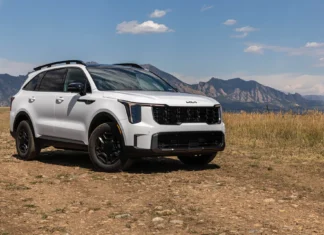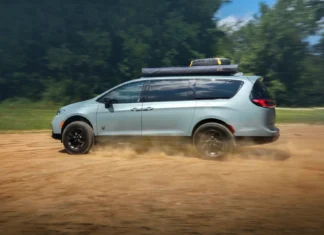A new Toyota 4Runner definitely doesn’t come around every day, so we want to put the 2025 model through its paces!
After the initial reveal last year, we at TFL Studios put our name down for a new sixth-generation Toyota 4Runner to add to our long-term fleet. This car is a huge deal: Not only is it the first completely new 4Runner in 15 long years, but it’s bringing new models and powertrains to the lineup that shake up what’s defined Toyota’s iconic SUV over the past couple decades. In the video below, Roman and Tommy go through a lot of the details of what has changed with this new model.
In case you need to catch up, though, let’s go through the fundamentals here as well. Instead of the long-lived 4.0-liter 1GR-FE V6 that was the backbone of the fifth and fourth-generation 4Runners all the way back to 2002, we’re now rocking a 2.4-liter turbocharged four-cylinder engine called the T24A-FTS that is now ubiquitous across the Toyota and Lexus lineup. It’s the same setup that’s in the (now more closely related) Tacoma, as well as the Highlander, Grand Highlander and Crown Signia. In this application, it puts out 278 horsepower and 317 lb-ft of torque through an 8-speed automatic transmission.
This time around, though, we’re also getting the first hybrid 4Runner, that uses the same turbocharged engine mated to an electric motor. Working together, those models put out 326 horsepower and 465 lb-ft of torque. The “iForce Max” option, as its called, is available on all but the SR5 and TRD Sport trims, so you can get it on the TRD Off-Road and TRD Off-Road Premium — though the specific car we bought has the standard turbo-four — as well as the Limited, Platinum and TRD Pro.
If you’re willing to fork over nearly $70,000, the TRD Pro is still an option, of course, with the iForce Max setup as standard. For 2025, there’s an alternative for those looking for more of an overlanding rig, thanks to the Trailhunter trim. In terms of model position and pricing, this sits right alongside the TRD Pro, so you’ll pay the same $68,350 and it just comes down to preference, assuming you can buy either at MSRP.
On the price subject, we ended up getting the 2025 Toyota 4Runner TRD Off-Road Premium in Ice Cap (white). Including Toyota’s $1,450 destination charge, we ultimately paid $58,318 for this example. That includes a range of standalone options like an $850 power tilt/slide moonroof, a three-year SiriusXM subscription ($350), a $135 retractable cargo cover and $248 all-weather floor mats, $120 door edge guards and $195 for a towing hitch ball and blacked out front and rear badging.
Is it worth that kind of cash? Well, we’re planning to find out over the next several months, putting the 4Runner through its paces. That will bring in off-roading — stay tuned for that this weekend — fuel economy testing, possibly some drag racing and much more.
Check out more on our new 4Runner below:























































